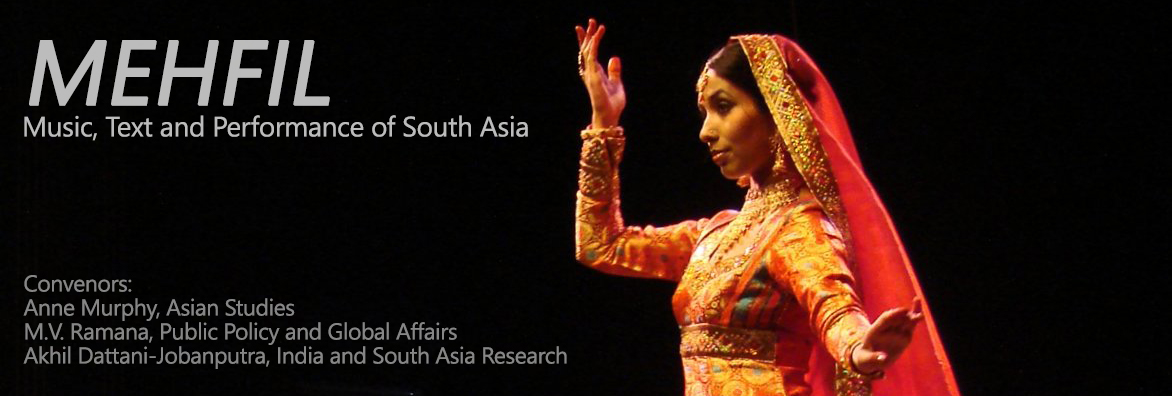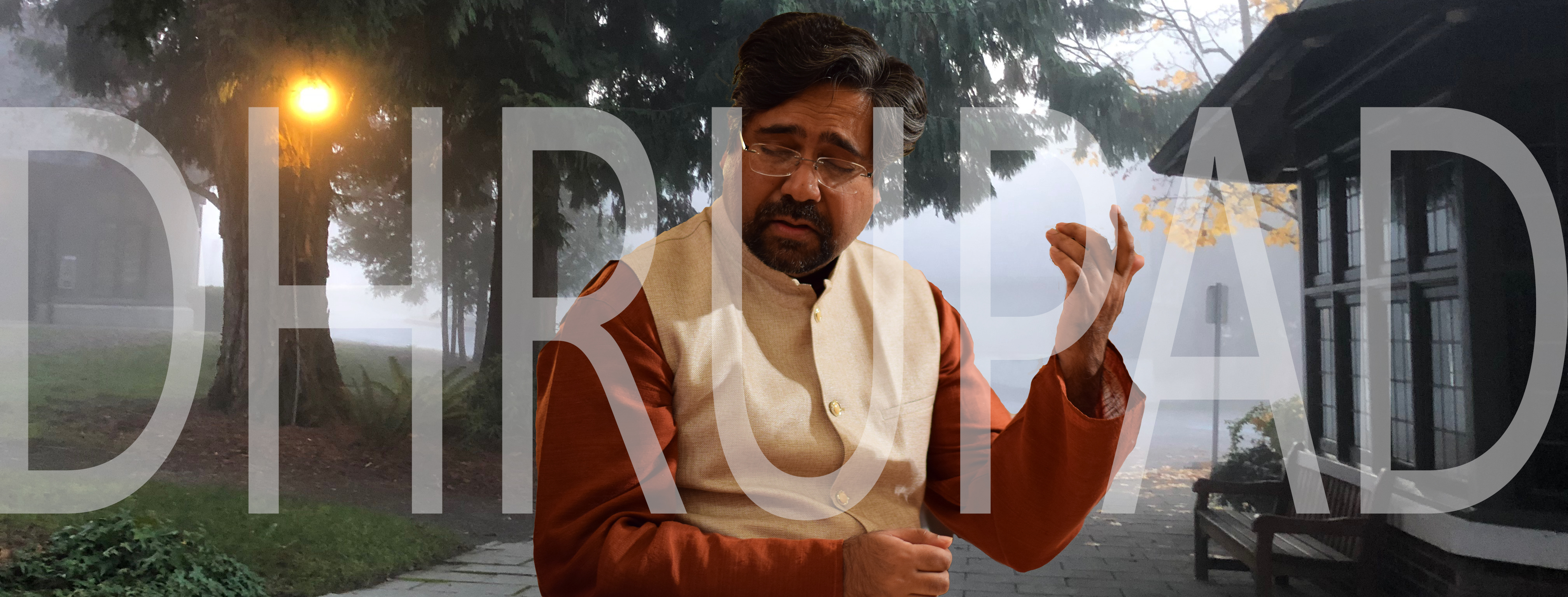What is Mehfil?

Mehfil: Music, Text and Performance of South Asia, a lecture series convened by Anne Murphy and M.V. Ramana, with the assistance of Akhil Dattani-Jobanputra at the Centre for India and South Asia Research (CISAR) at UBC. This series is the first of its kind at Green College, bringing the musical experience of South Asia to the Coach House.
In Urdu and Hindi, Mehfil is a term used for an intimate gathering that features an art performance, such as music, poetry or dance. This series brings performers and scholars to campus to allow faculty, students, and staff to explore a few South Asian musical and performance traditions, and the texts they draw on. We engage with scholars and local performers, and bring in two sets of performers from South Asia, to explore the popular and the classical, the religious and the secular.
In this session of Mehfil, Arijit Mahalanabis and Kishan Patel speak on dhrupad, the oldest surviving classical style of Hindustani vocal music.
Arijit Mahalanabis began his studies in music under vocalist Smt. Shahana Banerjee of Delhi, shortly before his family moved from India to the United States. Faced with few options for formal study, Arijit undertook an intense period of self-directed study, encouraged and supported by his mother, Smt. Sukla Mahalanobis. Starting in 1989, he began a long association with Penn State University’s Raaga. During this time, he received much encouragement, mentoring and informal guidance from the members of this group, in particular in the joys of Carnatic music. In 1999 he moved to Seattle, a seminal moment in his musical life. There, he began a diligent period of discipleship under Smt. Shantha Benegal, a vocalist and musicologist versed in Dagar Bani Dhrupad, Khayal, and Thumri. Arijit learned much about each of these forms from his primary Guru. He was also deeply influenced in his studies by time spent with various visiting musicians.
Arijit spent 15 years rejuvenating the Seattle Indian music scene, in the process serving in several major organizations. He served as the president of Ragamala, an organization devoted to presenting musicians from India to Seattle audiences. Arijit also established the Ashta Prahar, an annual 24 hour festival of Indian music, featuring a lineup of musicians local, national and international. He performed at every major venue in the area, including Ragamala, Town Hall, Cornish College of the Arts, the University of Washington, and Northwest Folklife Festival. Arijit has also performed across the country at various venues. After serving in adjunct positions at the Evergreen State College and the University of Washington, in 2008, Arijit found his true calling as a teacher of music, when he established the Seattle Indian Music Academy (SIMA). In 2014, after 15 years in Seattle, he relocated to State College, and is presently helping to establish a new SIMA (the Society for Indian Music and Arts) in his old hometown.
Kishan Patel is emerging as an all-rounder with potential as a singer, harmonium accompanist, esraj player, tabaliya and pakhawaji under the tutelage of his guru, Arijit Mahalanabis. Previously, Kishan studied vocal music with Dr. Nisha Joshi in Portland, Oregon, and mridangam under Vidwan Poovalur Srinivasan in Texas. He was also a percussionist in his high school band. However he has found his niche in north Indian classical music. Having moved to State College, PA, Kishan continues his college education through Bellevue College, simultaneously studying music with Arijit. Aside from solo performances, Kishan has had the opportunity to accompany some of India's finest musicians including Vidushi Aditi Kaikini Upadhya, Mitali Bhawmik, Sandipan Samajpati, Kumud Diwan, Satish Vyas, and Arnab Chakrabarty.

(Arijit Mahalanabis)
About this talk...
Most scholars of Indian music consider dhrupad, and its cognate dhamār, to be the oldest subgenres of Hindustānī music. The practice and performance of this art has grown in popularity in recent times, though a wider understanding of it remains elusive. In this talk, the artists will present a model of dhrupad that defines it as a musical entity in multiple dimensions. They will consider it from the perspective of alāp syllables, the tonal complex of the rāga, time and rhythm, tonal dynamics and textual content. In each of these dimensions, they will introduce a logical calculus that governs the progression of content. Taken in totality, these calculi uniquely define a well-formed dhrupad performance. The artists hope that this talk will allow the audience to more critically listen to and understand a dhrupad performance.
This event was co-sponsored by the Asta Alliance and the Indian Classical Music Society of Vancouver (ICMSV).
Visit Green College’s YouTube channel to experience “Dhrupad as a Progression in Multiple Dimensions,” a charming mix of performance and lecture, which took place in a fall evening in October 2019.
